History of Giving
History of Giving
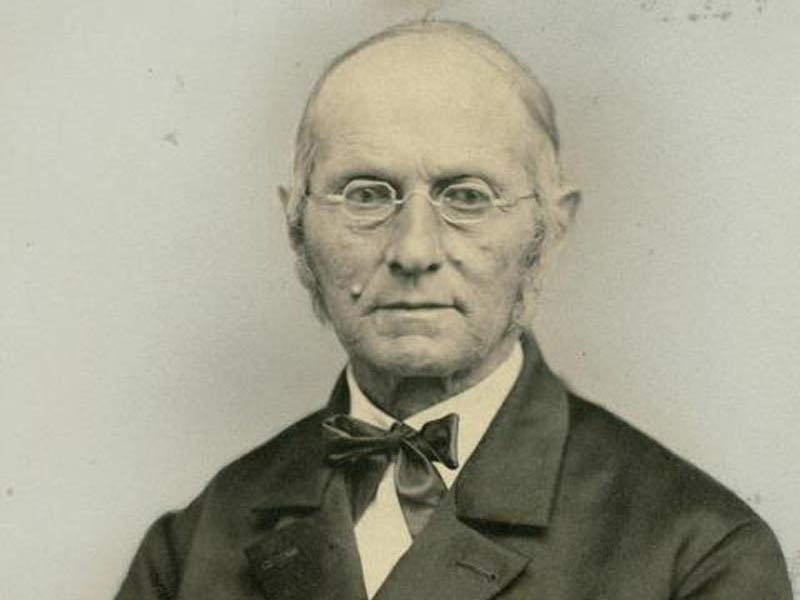
“Present Truth” First Published
Joseph Bates sacrifices his savings and spends long hours publishing the first literature of the church. The paper is given free to those who can’t afford it.

Publishing Work Gains Momentum
The Second Adventist Review and Sabbath Herald launches (now the Adventist Review). Other publications follow: James White begins publishing the Youth Instructor (now Insight Magazine) and Bible lessons for early Sabbath Schools.

First Adventist School Founded
Martha Byington starts the first Adventist Church School.

First Adventist Publishing House Founded
The "streams of light" continued in 1855 as the first Adventist publishing house was established in Battle Creek – the forerunner of today's Review & Herald Publishing Association, now based in Hagerstown, Maryland.

Systematic Benevolence
A plan to support the ministry was needed, and under the leadership of J.N. Andrews a plan known as Systematic Benevolence (or "Sister Betsy") was proposed. The funds sustained the work in Michigan and sent five missionaries Westward. The church would later adopt the biblical principal of tithing.

First Local Churches Organized
The first local churches are formally organized. In 1860 James White raised the question of and encouraged formal church organization. By Oct. 1, 1860, the fledgling church adopted the name Seventh-day Adventist.

Local Conferences Formed
Seven local conferences are formed. These include southern Iowa, Illinois, and New York; others soon follow.

General Conference Established
In May 1863, representatives from local conferences meet and the General Conference of Seventh-day Adventists comes into being. John Byington is named its first president. At this time the young church had approximately 3,500 members and thirty ministers.

Western Health Reform Institute Established
Western Health Reform Institute in Battle Creek, Michigan is founded. This is the first of hundreds of Adventist health-care institutions to follow. This facility eventually becomes the renowned Battle Creek Sanitarium under the direction of Dr. J.H. Kellogg, known worldwide as a premier health retreat.

Growth in Missions, Education, and Publishing
In September J.N. Andrews, the first official Adventist missionary, sails for Europe. Battle Creek College, the first Adventist school sponsored by the GC, is founded. Signs of the Times magazine and Pacific Press established.
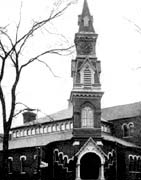
Battle Creek’s Dime Tabernacle is Built
In a unique plan for funding, this historic church was built "one dime at a time." Before the days when the rapidly growing young denomination realized the disadvantages of over-centralization, the Dime Tabernacle was the center of church activity in Battle Creek, Michigan.
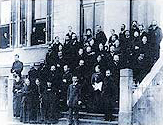
Ellen White Makes European Trip
Ellen White sails for Europe to support and encourage outreach work abroad.

Pivotal General Conference Session
The General Conference session held in Minneapolis helps the young denomination refocus on the saving righteousness of Christ. E.J. Waggoner and A.T. Jones, along with Ellen White, urge the church to stress the powerful message of Christ and His gift of righteousness.

Ellen White Travels to Australia
Ellen White journeys to Australia and influences the development of Avondale School for Christian Workers (later Avondale College). Avondale becomes a model school and helps shape the face of Adventist Education around the world.

The Morning Stars’ Mission
Edson White and Will Palmer build the mission boat Morning Star, and floated it down the Mississippi River – generous gifts allow the raising of churches among African Americans in the deep south. The boat leads to the founding of nearly 50 schools.
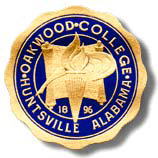
Oakwood College Formed
The General Conference opens Alabama's Oakwood Industrial School, the forerunner of today's Oakwood College. This school soon became the center for training Black leadership.

Christian Record Braille Foundation Opens
The denomination begins a program to reach the blind with the Three Angel's Message.

Denominational Re-Organization
The General Conference endorses a plan of union conferences and departments, co-ordinating and unifying the denomination's efforts. The departmental structure became duplicated at every level of Adventist organization – including that of the local church.

Loma Linda
Loma Linda Sanitarium near L.A. is a major development in Adventist medicine, becoming the headquarters for medical training - The College of Medical Evangelists. In the early 1900's Ellen White and Pastor John Burden establish California health facilities in Glendale and Paradise Valley.

World Divisions are Formed
World divisions of the denomination are formed on a continental basis.

Seventh-Day Adventist Theological Seminary
The denomination's Advanced Bible School opens and by the late 1930's this institution had been renamed The Seventh-day Adventist Theological Seminary, located in Tacoma Park, Maryland.
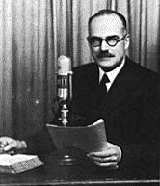
The Voice of Prophecy is Broadcast Nationally
HMS Richards understood the wonderful possibilities of radio in spreading the gospel. He begun his work in 1930 at KGER in Long Beach, California. By 1942 The Voice of Prophecy became one of the first religious programs to enter national broadcasting in the United States.

Adventist Television
Faith for Today, with host William Fagal, becomes the first nationwide Adventist television broadcast. The 1950's also saw the beginnings of evangelist George Vanderman's It Is Written telecast as the denomi-nation began utilizing multi-media outreach.

Pivotal General Conference Session
The General Conference, held in Dallas, formulates Adventism's 27 Fundamental beliefs. Article 20 reads: "We are God's stewards, entrusted by Him with time and opportunities, abilities and possessions, all the blessings of the earth and its resources..."

ADRA Formed
Creation of ADRA–the denomination's disaster and relief organization that serves throughout the world.

Doors Open in Former Soviet Union
The Soviet Union dissolves, and new doors begin opening for the spread of the gospel in the former Soviet Union. Evangelist Mark Finley (It Is Written) conducted a dynamic and successful crusade held in Kremlin Hall itself.

Satellite Evangelism
Net '95 with speaker Mark Finley, begins an exciting new outreach era in North America and the global community. Thousands of new believers are brought into the church family. Subsequent "Net" outreaches and other satellite broadcasts continue to make substantial impacts in denominational growth.

Adventism Today
Adventists continue to be one of the world's fastest growing Christian bodies. A new awakening to the tremendous opportunities to bring the good news to the people of the earth is energizing the church, and growth will continue as members faithfully give in all the areas of the Personal Giving Plan.
